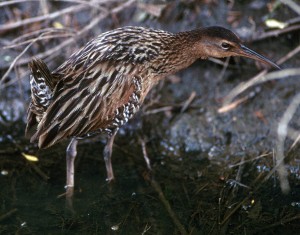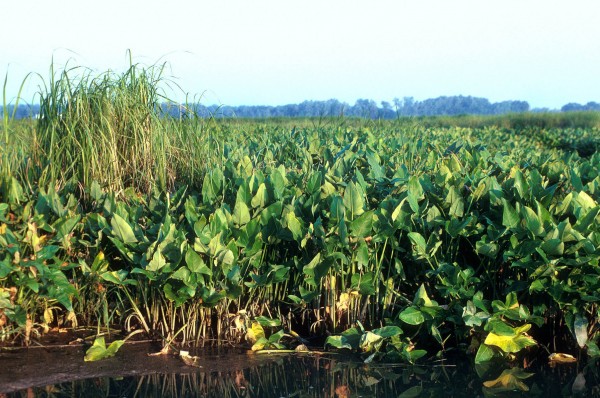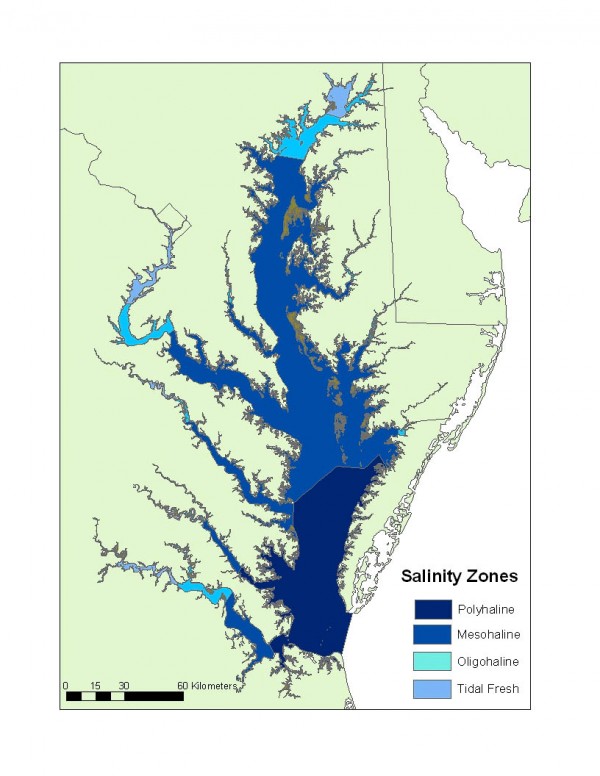Investigation into the ecology of tidal freshwater marsh birds
Azalea returns to Mattamuskeet NWR in NC
March 9, 2010Winter marshbirds
March 11, 2010
Written by Michael Wilson
March 10, 2010
Emergent tidal marshes are a dominant feature of the Chesapeake Bay’s estuarine environment and account for 66% of its classified wetlands. Tidal marshes are indispensable to the overall health of the Bay’s ecosystem by providing significant contributions to trophic production, nutrient cycle regulation, and enhancing water quality by the filtering of pollutants.

The majority of the king rail population in the Chesapeake Bay relies on tidal freshwater marshes. Photo by Bryan Watts.
Chesapeake Bay marshes also provide critical resources for a number of bird species that are of conservation concern. Among these are a specific set of avian taxa, collectively termed marsh birds, which rely exclusively on marsh vegetation or underlying marsh substrate throughout their annual cycle. Many marsh birds are of high conservation concern because their populations are small or declining. This is due, in part, to the fact that they require habitats that are spatially restricted to a narrow band between marine and terrestrial environments. Marsh birds are limited further because they often require a combination of resources within marshes that are only met in a fraction of the total marsh area. Marsh bird habitats have been in a constant state of decline and degradation in the modern era because of sea-level rise and human conversion of coastal wetlands to other uses.
Marshes vary in salinity, physical structure, and plant composition according to their geographic position in the Bay. Tidal marshes are often classified into three classes based on salinity as 1) salt marsh, 2) brackish marsh, or 3) freshwater marsh. Salt marsh occurs along the polyhaline shorelines (salinity 18-30 ppt) in the main stem of the Bay. These marshes ultimately give way to brackish and freshwater marshes of the upper Bay and its tributaries. For a quick depiction, the portion of the salt marshes that are regualarly inundated with daily tides are typically dominated by smooth cordgrass (Spartina alterniflora), whereas the same tidal zone of freshwater marshes are more floristically diverse but often best characterized by plants such as tall cordgrass (S. cynosuroides) and arrow arum (Peltandra virginica).

Freshwater marsh with arrow arum in the foreground. Photo by Bryan Watts.
Salinity is the overwhelming, driving force on the ecology of waterbirds in the Chesapeake Bay. Salinity often mediates the distribution, productivity, nestling growth, and population trends of the Bay’s bald eagles, ospreys, herons, egrets, terns, gulls, and others. Salinity is also a significant modifier on the distribution of marsh birds. Marsh bird communities are biologically separated into one of three functional groups: salt, brackish, or freshwater. Although there is information on the distribution of these communities we know very little on the effects of salinity on other marsh bird demographic variables.
Over the past 17 years, the Center for Conservation Biology (CCB) has had the opportunity to conduct several lines of investigation into the ecology of marsh birds in the salt and brackish marshes of the Bay. These efforts have resulted in the survey of over 600 marsh patches that have helped to reveal specific relationships of marsh birds with patch size, elevation, vegetation composition, and the presence of hydrologic features such as sloughs. In turn, these studies have lead to the production of comprehensive guidelines for the conservation of marsh birds such as clapper rails, black rails, Virginia rails, willets, seaside sparrows, salt marsh sparrows, and marsh wrens.
In the summer of 2009, CCB had its first opportunity to launch a broad-scale investigation into the tidal freshwater marshes of the Bay with the cooperation and funding from the Department of Defense Legacy Program. One objective of this study was to gain a better understanding of the relevant factors that influence the distribution and abundance of marsh birds within tidal-fresh and oligohaline (salinity 0 to 5.0 ppt) reaches of the Chesapeake Bay.

Chesapeake Bay salinity zones mediate the distribution of salt marsh (polyhaline), brackish marsh (mesohaline) and freshwater marsh (oligohaline and tidal fresh). Map by the Center for Conservation Biology.
The tidal-fresh portion of the Bay is extremely significant to populations of freshwater marsh birds such as the king rail, least bittern, marsh wren, and the coastal plain swamp sparrow. The Chesapeake Bay supports 82% of all the tidal freshwater/oligohaline marshes in the Mid-Atlantic region and nearly 15% of these marsh types along the entire Atlantic coast. Based on these percentages, it is evident that the Bay likely supports a commensurate proportion of these species populations within the broader regions.
We approached the study’s objective by investigating how salinity, vegetation cover, patch size, and the underlying topography and geography influence freshwater marsh birds. We conducted 696 surveys of 232 points across selected marshes in the main stems and associated tributaries of the James, York, Pamunkey, Mattaponi, Rappahannock, and North Landing rivers, as well as Back Bay. We also surveyed into the brackish (mesohaline) zones within some of these sub-regions to get an accurate depiction of the community turnover with the transition to freshwater.
We detected 96 king rails, 254 clapper rails, 14 Virginia rails, 52 least bitterns, 411 marsh wrens and 45 seaside sparrows during surveys. The most surprising result is how far the marsh birds that have traditionally relied on more saline environments now reach into freshwater communities. The best example is the clapper rail, which historically was relegated to brackish and salt marshes in the Bay, but now is found in many habitats where king rails are expected to occur. In certain freshwater marshes, clapper rails seem to have replaced king rails in order of abundance. Moreover, king rail detections were lower than expected and were not found to be as widespread as once assumed. King rails are declining throughout their range, including the Chesapeake Bay for reasons unknown.

Relative incidence (proportion of survey points) for selected marsh birds in tidal freshwater marshes in Virginia. Graph by the Center for Conservation Biology.
Both king rails and least bitterns had greater detection rates within tall cordgrass marshes than other cover types and neither of these species were found in marshes dominated only by arrow arum. This result is particularly significant because arrow arum marshes characterize lower elevation marshes. Tidal freshwater marshes in the Bay are threatened by sea-level rise and currently there are several areas where tall cordgrass marshes that are being transformed into arrow arum marsh because of rising waters (see this issue’s article entitled, ‘Sea-level rise and tidal freshwater marsh birds’). The replacement of tall cordgrass marsh with arrow arum marsh for may have considerable negative impacts on the populations of king rails, least bitterns, and other freshwater marsh birds for the future.
In addition to sea-level rise, the tidal freshwater marshes of the Bay are also threatened by invasive exotic plants such as phragmites, barriers to lateral marsh migration from upland development, and other forms of degradation. Phragmites (Phragmites australis, known as the common reed) poses a significant threat to marsh birds by altering the habitat structure and trophic production they depend on. For instance, marsh wrens exhibit lower densities in portions of marshes dominated by phragmites compared to tall cordgrass or cattail marshes. Marsh wrens also have lower densities in arrow arum marshes suggesting that populations of this species can be severely reduced in the future with the combined effects of sea-level rise and continued spread of phragmites.
CCB will continue to investigate tidal marsh bird communities to gain better insight on the ecological modifiers on demographics and to forecast future population changes under threats of sea-level rise and habitat degradation.
Project sponsored by The Center for Conservation Biology (CCB) and the U.S. Department of Defense (DOD) Legacy Resource Management Program.



